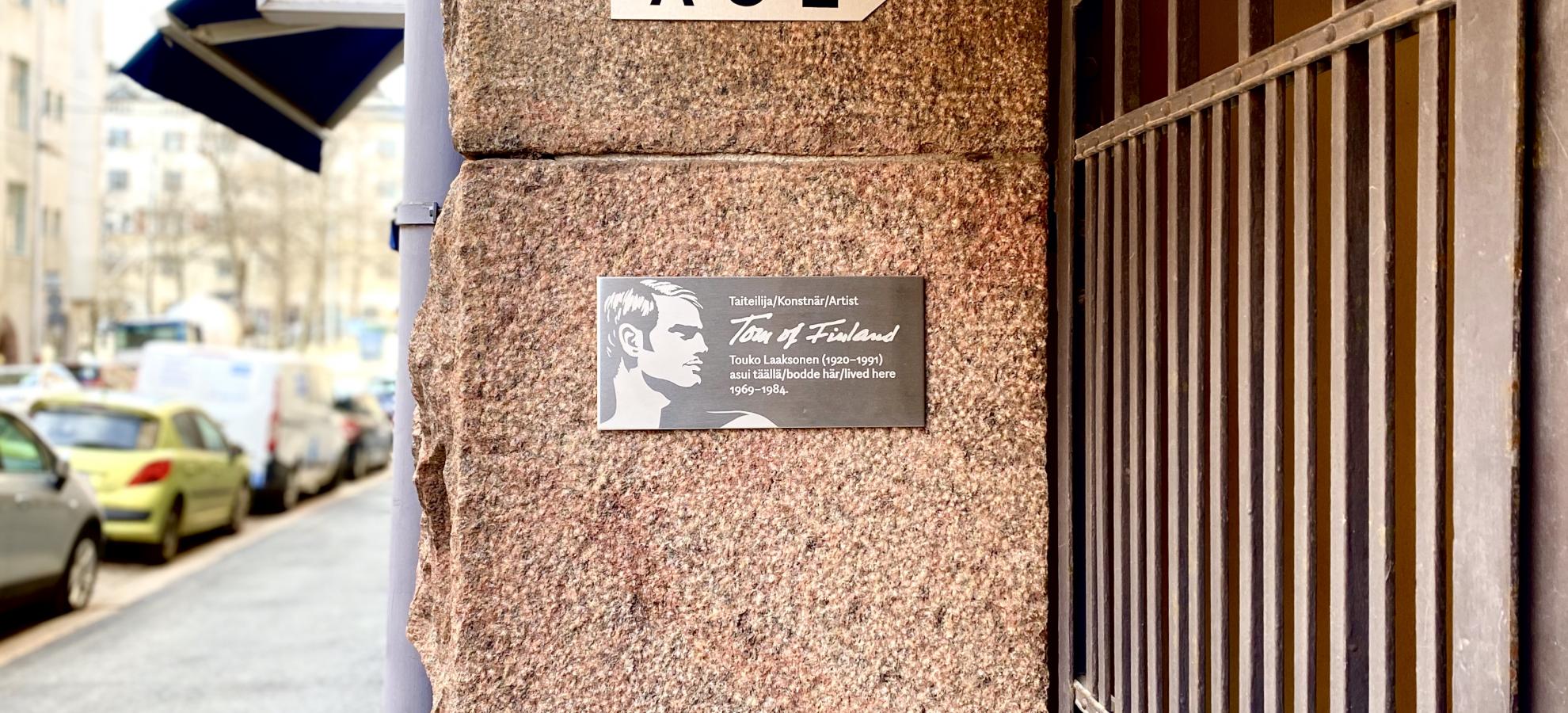
Suomenlinna
Touko Laaksonen moved to Helsinki in autumn 1939 after graduating from high school. Born into a conservative family, the 19-year-old had barely started his advertising studies in Helsinki's School of Sales and Advertising when the Winter War between the Soviet Union and Finland broke out. Touko was drafted into military service the following summer, several weeks after the end of the Winter War.
Touko first served in the infantry, and proceeded to train as a non-commissioned junior officer. The so-called Continuation War with the Soviet Union started in June 1941 and Touko was transferred to serve in air defence at the Suomenlinna Sea Fortress. Later on, he fought in the war in other parts of Helsinki, for instance at Pajakukkula in the city's Pitäjänmäki district.
Laaksonen was a distinguished soldier; he was in charge of his own air defence crew in Helsinki. The team successfully shot down a Russian plane and Laaksonen was awarded the Cross of Liberty medal, which the famed military leader Marshal Mannerheim personally pinned on the young lieutenant's chest.
Later Laaksonen spent little time recounting his actual combat experience. Wartime involved so much more than just violence.
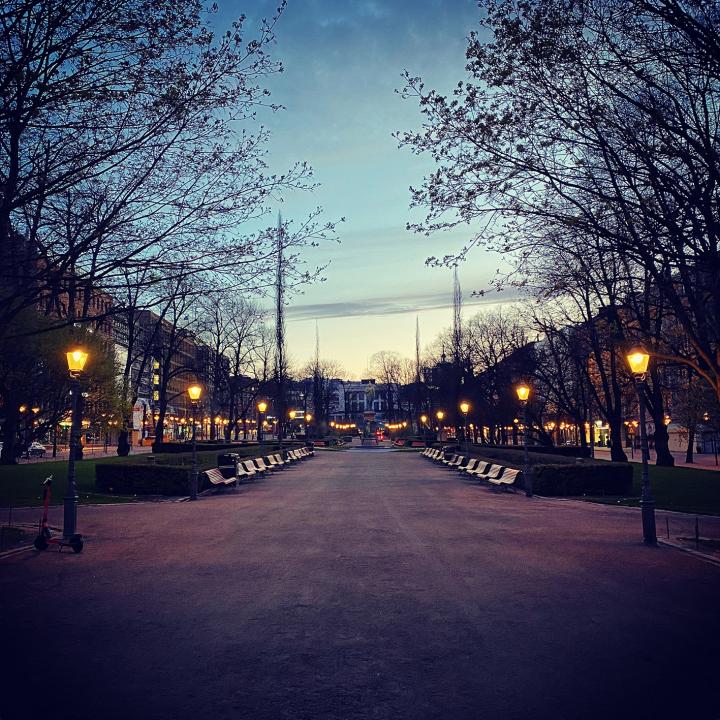
Esplanade Park
Homosexuality was a crime in 1940s Finland and homosexual acts could even lead to two years in prison.
The war had, however, a positive impact on the general atmosphere in the country. The residents of a darkened city regarded one another with a little more broad-mindedness. With the presence of death lingering in the air, there was less opportunity to moralise and meddle in other people's business. Everyone had their own difficulties to worry about
Touko has later reported to even have been surprised about the openness of gay life in wartime Helsinki.
"For some reason, the central Esplanade boulevard known as Espa and the nearby Observatory Hill were the number one spots in Helsinki. Everyone was at Espa… I was casually passing through there and started to notice that pretty much everyone were of the giggling kind, and I realised that they must be gay…"
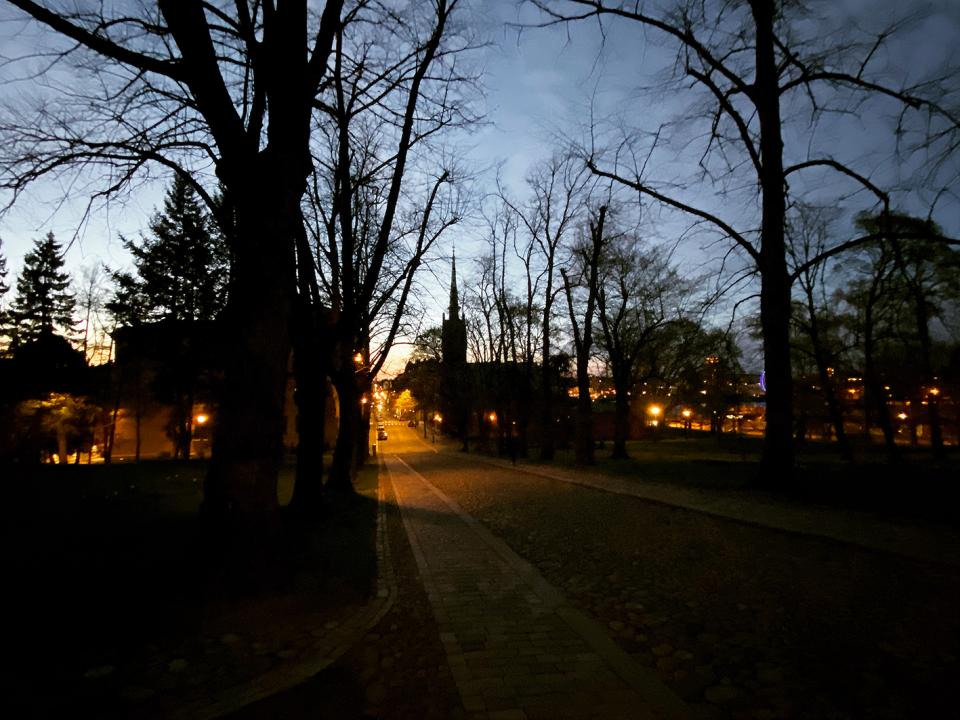
Observatory Hill
Touko found men to suit his taste at the Observatory Hill, a slopey park spreading around the old observatory.
The said hill had already become established as a notorious cruising spot at the turn of the century: a place for nocturnal meetings among men. The hill was a prime location for the bored soldiers from the adjacent Kaarti barracks who were into drinking and other escapades.
For three years from September 1944 until the Paris peace treaty in 1947, Helsinki streets were dotted with Russian soldiers on patrol rounds.
"Then the Soviets came. They seemed to be purposefully drafted from Siberia, sort of rough-looking guys who didn't speak any languages so they couldn't communicate with the Finns. These soldiers patrolled the streets in pairs and kept an eye on possible riots or troubles. They started to very quickly make their rounds at the Observatory Hill, which was a popular place among gays at the time."
The war was over and Touko was interested in life and sex, not in who was fighting on which side. Many nighttime encounters with former enemies on Observatory Hill turned into lasting impressions in Tom of Finland illustrations.
Restaurant Palace, Eteläranta 10
Laaksonen told in a 1990 interview that after he returned from the war he felt like he had already lived a full lifetime. He felt like an "old man" at the age of 24. But life picked up where he had left it off before the war. Touko pursued another passion alongside his advertisement studies: music.
Laaksonen put his childhood choir hobby to use in the military and compiled a choir from the artillery men. The choir even took part in wartime entertainment tours. One performance was even recorded for a radio broadcast on 21 September 1942.
Laaksonen dreamt of a career in music first and foremost, illustration came only second place. He studied the piano at the Sibelius Academy in Helsinki (1945-1949) and worked as a freelance musician alongside his studies.
Touko later reflected self-critically on his musical career.
"I imagined becoming a good pianist and composer. I also studied composition but it was a dead end. I had to work so damn hard with the piano, and I never learned anything."
His critique was however far from objective. Touko made a living after the war as a successful restaurant pianist at well-known central Helsinki venues like Primula, and Elanto on Kluuvikatu. His longest stint was at the elegant restaurant of the luxurious Palace hotel. He also had a spell as the rehearsal pianist of Helsinki’s Swedish Theatre, and composed his own music. One composition, "Vihmalintu", was based on a poem by Aino Kallas and recorded in 1940. It was performed by the mixed choir Kulkuset and led by Edvin Laaksonen.

Restaurant König, Mikonkatu 4
Touko met his life partner Veli "Nipa" Mäkinen by chance in summer 1953. Laaksonen ran into the young man near his house and invited him home for a drink. Veli didn't oppose the idea. Laaksonen and Mäkinen went on to live together for the next 28 years.
Mäkinen had moved to Helsinki from the town of Orivesi. He was a talented dancer and his work included performances in different operettas. While pursuing artistic work, Veli made a more stable living as a waiter and headwaiter. He worked in, e.g. the Hildén coffee house on Fredrikinkatu, and for several years as the headwaiter of the legendary restaurant König at Mikonkatu 4.
Veli took a long sick leave from his job at König in 1980. He passed away a year later due to laryngeal cancer at the age of 49.

Töölönkatu 42
After the war years, Laaksonen also completed his advertising diploma. He grew tired of the inconsistent paychecks of a musician in the mid-50s and sought a solution in his degree and the drawing skills he had honed over the years.
In 1958, Laaksonen applied for an illustrator position at the advertising agency Liikemainonta (later McCann Helsinki), and was hired. The agency's office was at Töölönkatu 42 for several years before relocating to Mannerheimintie and then Keskuskatu, all in central Helsinki. Touko did well in his 15 years in advertising and was promoted to be the agency's artistic director.
Keeping a low profile, Laaksonen sent some of his erotic drawings to the American "muscle journal" Physique Pictorial in 1956. The magazine published Touko's sexy illustrations in 1957 under the pseudonym Tom of Finland. The format of the name followed the style of Physique Pictorial, which also published artworks from aliases such as Bruce of Los Angeles and Spartan of Hollywood.
Tom of Finland's pictures were well-received and new commissions started to come in.
Tom's illustrations were inspired by his youth and wartime experiences. The recurring military uniforms were not a political statement in the world of Tom of Finland, but rather an erotic statement. In addition to soldiers, Tom's drawings featured other masculine archetypes such as lumberjacks, police officers, sailors and bikers. Touko drew what he found arousing, but he also shaped a new radical portrayal of homosexuals. The gays of Tom of Finland were not shown as tragic outcasts. Tom's men were powerful, healthy, happy and optimistic. Ideals born in a far from ideal society.
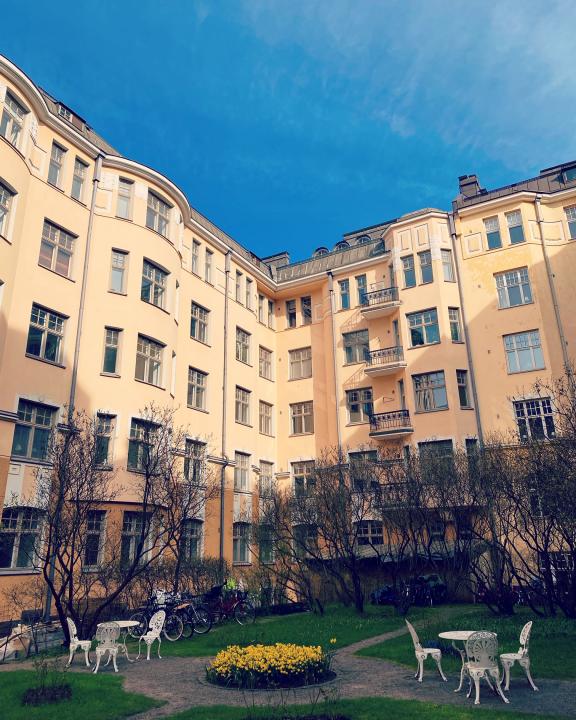
Tehtaankatu 7 (Touko and Nipa's home 1969-1984)
Touko and Veli lived together in various rental apartments in different parts of central Helsinki. In 1969, the couple moved to a swanky 92-square-metre apartment in the southern downtown district of Ullanlinna, at Tehtaankatu 7 D, apartment number 92.
Touko resigned from McCann the following year. The work of an art director of a major advertising agency meant dealing with an ever-growing pile of paperwork, and Touko grew tired of only being able to focus on his art at night.
In the 1970s, Tom of Finland's work started to be distributed by the Swedish publishing house Revolt Press. The new publisher found a wider reach for the work and organised the first Tom of Finland art exhibition, in the backroom of a sex shop in Hamburg's infamous St. Pauli district.
Touko was finally able to realise his long-running dream of a trip to the US in 1978. He was asked to illustrate a full Tom of Finland calendar and he arrived in America to attend its launch event. Touko was welcomed by his admirer and future colleague Durk Dehner in sunny Los Angeles. The men quickly became friends and founded the Tom of Finland Company already in the following year to manage the growing commercial operations.
Tom of Finland's reputation ballooned dramatically in the late 70s and early 80s. The impact of the secretly crafted illustrations were all of a sudden seen everywhere: in the music videos of contemporary pop artists like the Village People, Frankie Goes to Hollywood, and Freddie Mercury, in the shows of top fashion influencers such as Jean-Paul Gaultier and Thierry Mugler, and in films like Cruising. The art world superstars Andy Warhol and Robert Mapplethorpe also turned out to be fans – Warhol participated in Tom's first US exhibition and Mapplethorpe even visited Laaksonen in Finland.
In the following years, Tom of Finland had numerous exhibitions around the subcultural arenas of Europe and the US. In 1984, Laaksonen and Dehner founded the Tom of Finland Foundation with a mission to collect, archive and exhibit homoerotic art.
Tom of Finland's art institution debut was at the New Museum in New York City where he took part in a group exhibition in 1989.
Today, Tom of Finland's artworks are included in the collections of several prestigious art museums, such as the MoMA in New York, the Los Angeles County Museum of Art LACMA, the Art Institute of Chicago, and Helsinki's Kiasma Museum of Contemporary Art.
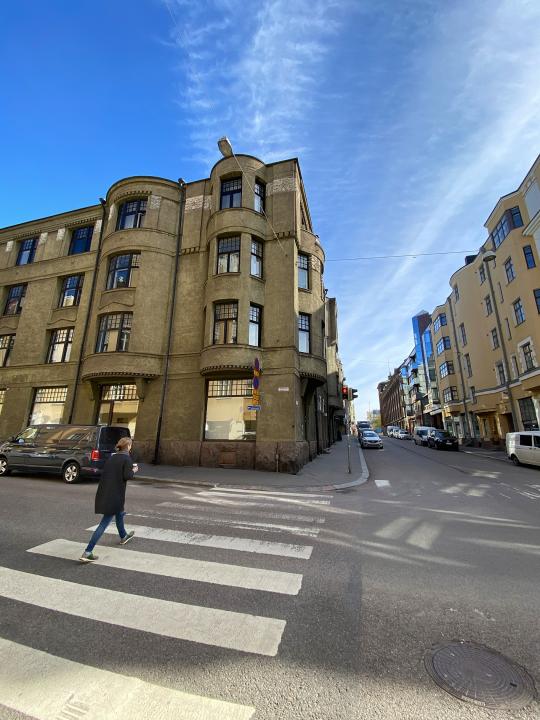
Fredrikinkatu 43 (Tom's home in 1986-91)
After Nipa's passing, Tom spent more and more time in the US. The Los Angeles sun, men, an acceptance by the city, and an atmosphere celebrating Tom's oeuvre kept energising the ageing artist. Every summer he would however return to Finland.
Tom was at the height of his career in 1986 when he moved into a spacious apartment in a Jugendstil house at the corner of Lönnrotinkatu and Fredrikinkatu in Kamppi district.
Tom's health took a downturn in the mid-80s. An avid smoker throughout his whole life, he was diagnosed with chronic obstructive pulmonary disease. The medical condition affected his life greatly. In 1988, he was forced to say goodbye to his beloved voyages to America.
Tom's medication had a side effect of the jitters and it became difficult to keep drawing. Laaksonen continued, however, to draw with charcoal and pastel chalk – more forgiving mediums – almost until his death.
Tom became more open to the media in his last years, also in Finland. One notable, long interview with filmmaker Ilppo Pohjola coincided with the documentary "Daddy and the Muscle Academy". Touko supported the project, which premiered at the Love & Anarchy Film Festival on 18 October 1991.
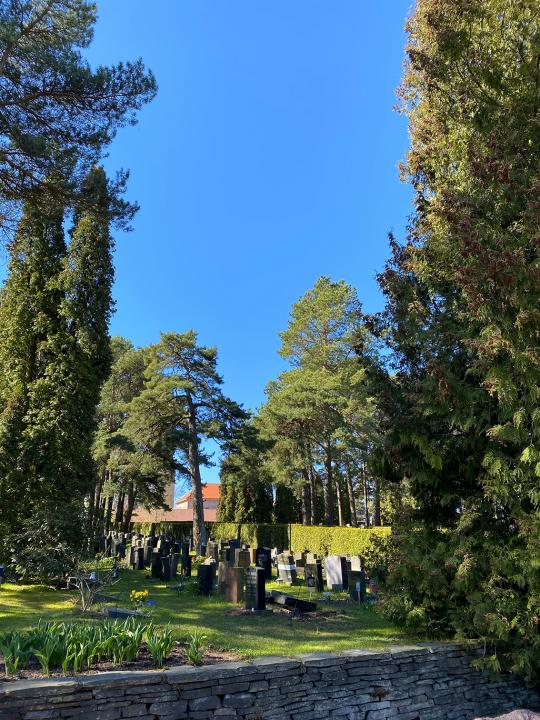
Hietaniemi Cemetery
Touko Laaksonen died only three weeks after the documentary’s premiere, on 7 November 1991 at the Laakso Hospital in Helsinki.
Tom of Finland's ashes were scattered at the memorial grove of the Hietaniemi Cemetery in Helsinki.
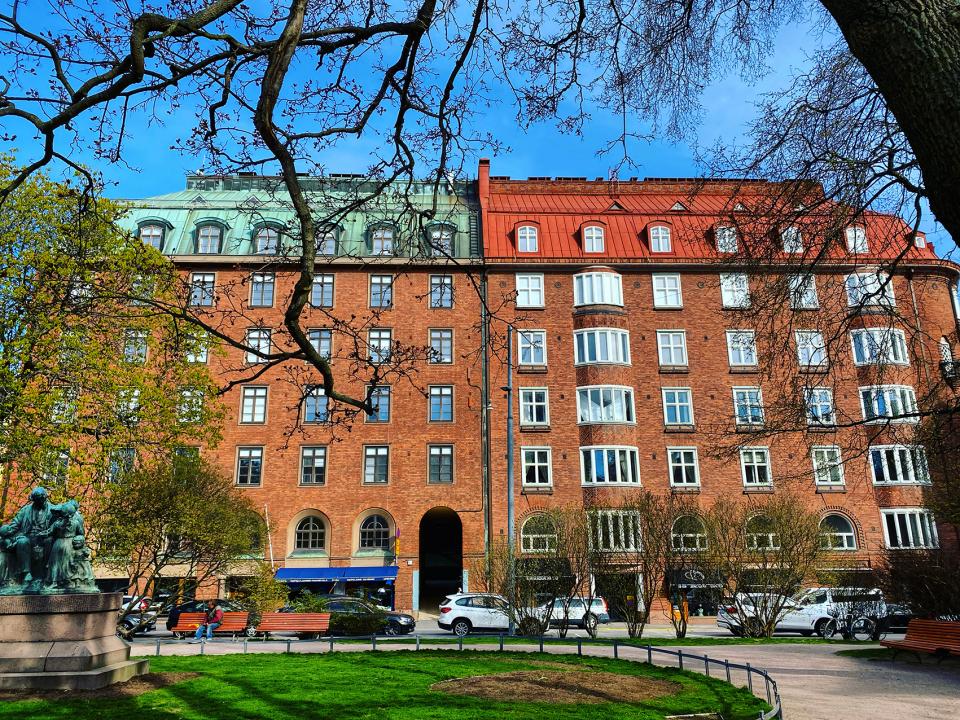
Ratakatu 1
MSC Finland was founded in 1976 as the first Finnish fetish association for men with an interest in leather, rubber, uniforms and sports gear.
Tom joined the club in 1977 and became an honorary member. He visited the club's events from time to time, for instance at the first ever gatherings in the Sörnäinen district, and club meetings at the Kultakauha restaurant on downtown Ratakatu. In 1990 he was appointed the club's honorary chairman.
The impact of Tom as an artist and ally cannot be underrated. The club members were proudly "Tom's men", and Laaksonen was one of them.
When Touko Laaksonen died in November 1991, MSC Finland honoured its honorary member by changing its official name to ”MSC Finland - Tom's Club”.

Tom of Finland memorial plaque
In August 2020, the Tom of Finland memorial plaque was unveiled in Helsinki. The plaque, created in honor of the centenary of the artist's birth, was attached to the wall of Laaksonen's long-term home building, Tehtaankatu 7. The project was implemented in collaboration with MSC Finland - Tom’s Club, LMC Tallinn, and the Tom of Finland Foundation. The plaque was designed by Matu Kormano.
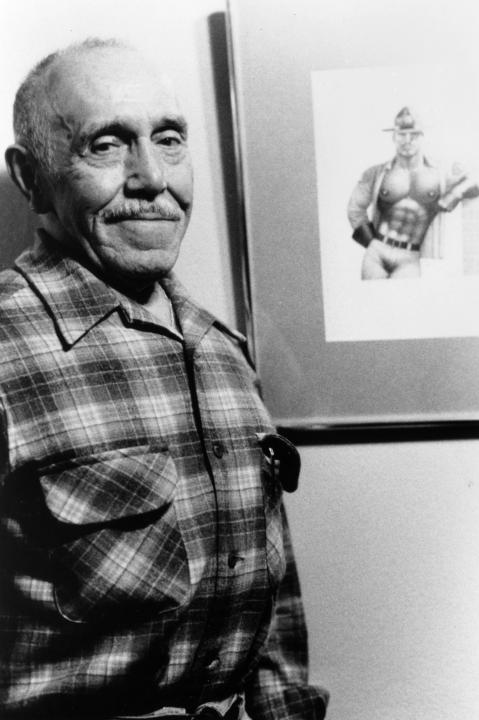
Sources for this article include Touko Laaksonen’s interview in the MSC Finland clubmember magazine Prätkäposti (3/1990), articles on Tom of Finland publised on the queer web community Ranneliike.net, and more.
